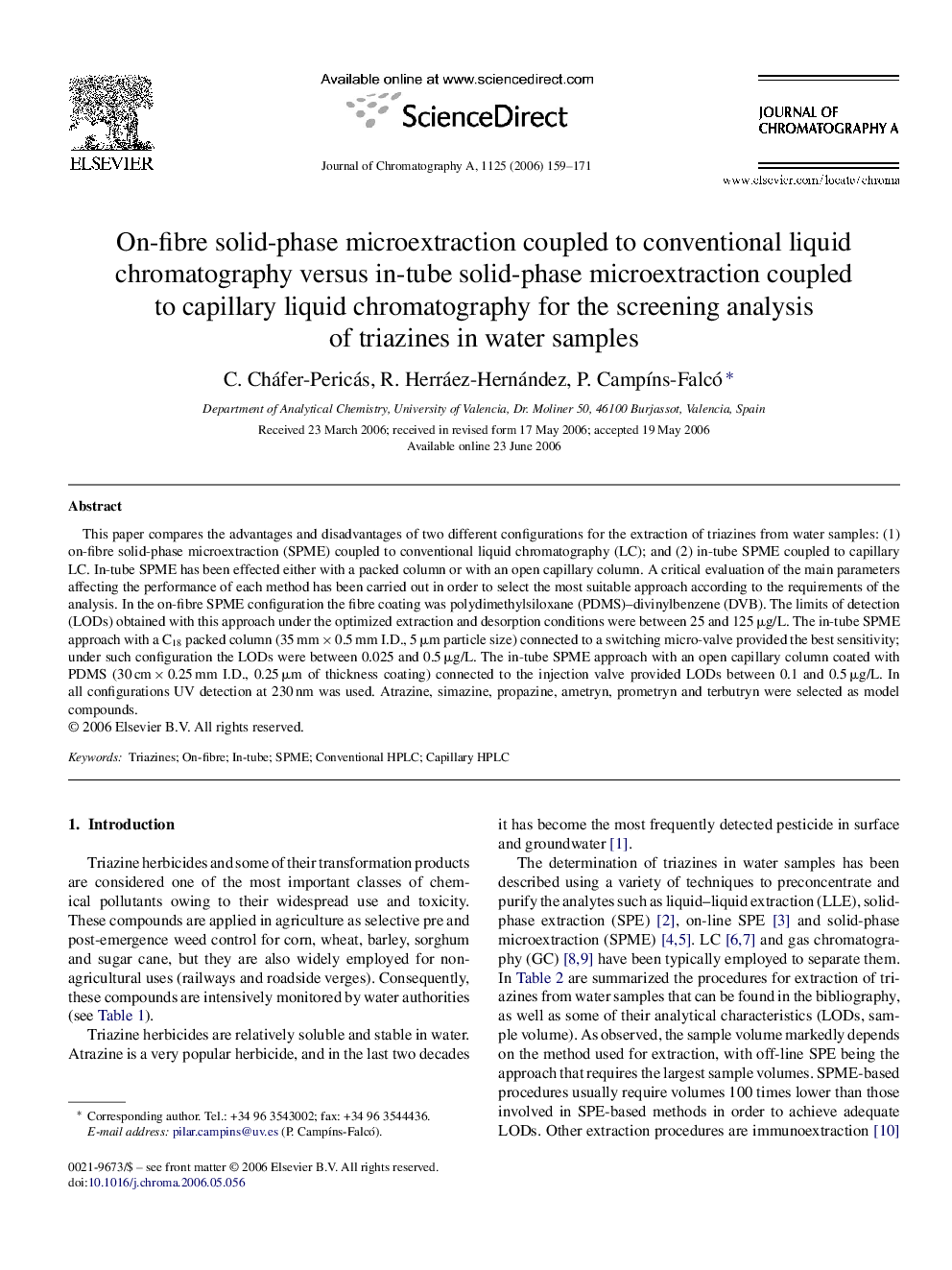| Article ID | Journal | Published Year | Pages | File Type |
|---|---|---|---|---|
| 1209825 | Journal of Chromatography A | 2006 | 13 Pages |
This paper compares the advantages and disadvantages of two different configurations for the extraction of triazines from water samples: (1) on-fibre solid-phase microextraction (SPME) coupled to conventional liquid chromatography (LC); and (2) in-tube SPME coupled to capillary LC. In-tube SPME has been effected either with a packed column or with an open capillary column. A critical evaluation of the main parameters affecting the performance of each method has been carried out in order to select the most suitable approach according to the requirements of the analysis. In the on-fibre SPME configuration the fibre coating was polydimethylsiloxane (PDMS)–divinylbenzene (DVB). The limits of detection (LODs) obtained with this approach under the optimized extraction and desorption conditions were between 25 and 125 μg/L. The in-tube SPME approach with a C18 packed column (35 mm × 0.5 mm I.D., 5 μm particle size) connected to a switching micro-valve provided the best sensitivity; under such configuration the LODs were between 0.025 and 0.5 μg/L. The in-tube SPME approach with an open capillary column coated with PDMS (30 cm × 0.25 mm I.D., 0.25 μm of thickness coating) connected to the injection valve provided LODs between 0.1 and 0.5 μg/L. In all configurations UV detection at 230 nm was used. Atrazine, simazine, propazine, ametryn, prometryn and terbutryn were selected as model compounds.
